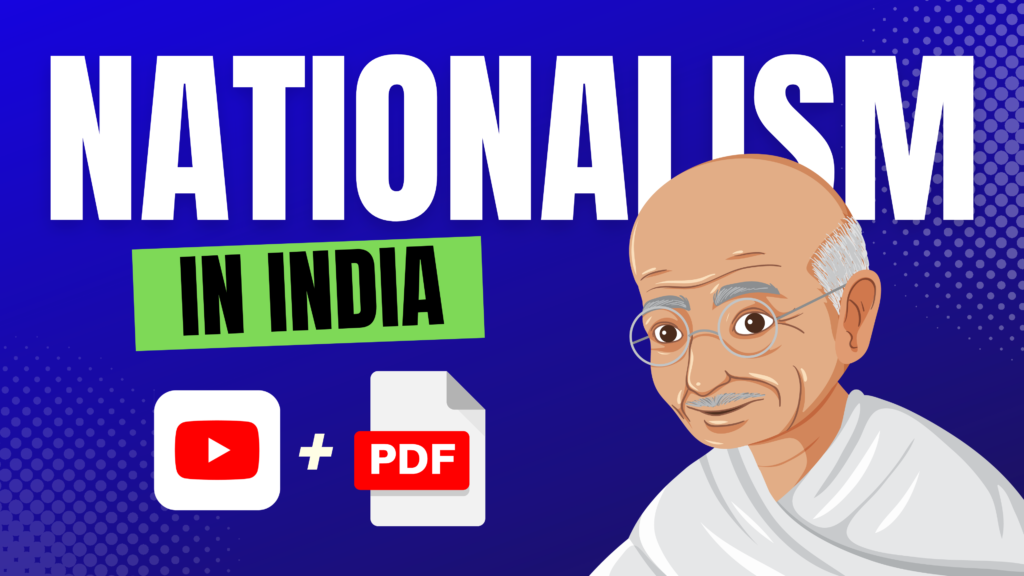Welcome to etutorguru.in This post contains all important dates related to class 10 history chapterwise
Chapter 1 : Rise of Nationalism in Europe
- 1789 : The French Revolution
- 1807 : The birth of Giuseppe Muzzini.
- 1815 : To draft a compromise for Europe, the representatives of the European nations—including Britain, Russia, Prussia, and Austria—who had defeated Napoleon together convened in Vienna.
- 1815 : Napoleon was overthrown.
- 1815 : Vienna Protocol
- 1821 : The struggle for Greek freedom began.
- 1824 : Lord Byron, an English poet, died in 1824.
- 1830 : In July 1830, there was the first uprising in France.
- 1832 : Treaty of Constantinople
- 1833 : When Emergent travelled from Hamburg to Nuremberg in 1833 to sell his goods, he had to go through 11 customs checkpoints and pay a customs tax that was about 5% of his travel cost.
- 1834 : A Zollverein customs union was established.
- 1848 : A French painter by the name of Frederic Sorrieu produced a quartet (4) of works in 1848 that depicted his vision of a world with democratic and socialist republics.
- 1848 : The authoritarian kingdoms of Central and Eastern Europe introduced changes after 1848 that had previously occurred in western Europe before 1815.
- 1859 : Piedmont and Sardinia were successful in defeating the Austrian army.
- 1861 : Victor Emmanuel II was proclaimed the king of United Italy.
- 1867 : The habsburg rulers granted more autonomy to the Hungarian
- 1871 : The prussian was proclaimed German emperor
- 1707 : The act of union between England and Scotland
Chapter 2 : Nationalism in India
- 1915 : Gandhiji returns to India
- 1917 : Gandhiji went to Champaran Bihar
- 1917 : Kheda Satyagraha in Gujarat
- 1918 : Ahmedabad mill Strike
- 1918 -1919 and 1920-21 : There is a severe food scarcity as a result of many Indian regions’ crops failing.
- 1919 : Rowlatt Act
- 13th April 1919 : JallianwalaBagh massacre
- 1919 : Khilafat committee was formed in Bombay
- 1920 : In summer of 1920 Gandhiji and Shawkat Ali to and extensively throughout the India
- 1920(Nagpur Session): Non cooperation programme was adopted by the National Congress
- 1909 : Gandhiji wrote Hind Swaraj
- 1920(June) : Jawaharlal Nehru began going around the villages in awadh
- 6th January 1921 : The police in the united provinces fired at the peasants near Rae Bareli
- January 1921 : The non cooperation Khilafat movement began
- 1921 census : According to the census, famines and other disasters caused the deaths of 12 to 13 million people.
- 1921 : Houses of talukdar and merchants were attacked
- 1921 : Gandhiji had designed the Swaraj flag
- February 1922 : Gandhi decided to withdraw the non cooperation movement
- 1924 : Ram Raju was captured and executed
- 1926-1930 : Agricultural prices began to fall from 1926 and collapsed after 1930
- 1927 : The establishment of the Indian Chamber of Commerce and Industries
- 1928 : Simon Commission arrived in India
- 1928 : All party conference
- October 1929 : Lord Irwin offered Dominion status
- December 1929 : PurnaSwaraj was demanded
- 26 January 1930 : Independence day was celebrated for the first time
- 6th April 1930 : Salt Satyagraha was started
- April 1930 : Angry crowds demonstrated in the streets of Peshawar
- 1930 : Muhammad Iqbal stepped down as Muslim League president.
- 5th March 1931 : Gandhi Irwin pact
- December 1931 : The political leaders of Indian freedom struggle was released from jail
- September 1932 : Poona pact
- 1930 and 1932 : There was a strike by railway workers in 1930 and dockworkers in 1932.
- 1934 : By 1934 the civil disobedience movement lost its momentum
- 14th July 1942 : The Indian National Congress endorsed the historic Quit India Resolution.
Chapter 3 : The Making of a Global World
- 3000 BC : West Asia today and the Indus valley civilization are connected by inactive coastal trade.
- 1870 : Live animals were transported from America to Europe until the 1870s.
- 1880 : In Late 1880s rinderpest arrived in Africa
- 1885 : In 1885 the big European powers met in Berlin to complete the carving up of Africa between them
- 1890 : By 1980 a global agricultural economy had taken shape
- 1920s : The housing and consumer Boom of the 1920 created the basic of prosperity of the US
- 1929 : By 1929 the world would be plunged into a depression such as it had never experienced before
- 1929 to mid 1930 : The Great Depression begin
- Between 1928 and 1934 : India’s exports and imports nearly Halved.
- 1935 : By 1935, most industrialised nations were experiencing a mild economic recovery.
Visit the Youtube channel (ETUTOR) – Class 10 Animated Videos
Chapter 4 The Age of Industrialization
- 1750 : By the 1750s the network controlled by Indian merchants was breaking down
- 1760 : Britain was importing 2.5 million pounds of raw cotton to feed its Cotton Industry
- 1760 : After 1760, the colonisation of East India Company power did not immediately cause a reduction in India’s textile exports.
- 1781 : James Watt made improvements to the Newcomen steam engine and patented the new engine in 1781.
- 1787 : By 1787 the import of cotton increased to 22 million pounds.
- 1840 : Up to 1840 cotton was the leading sector in the first phase of industrialisation
- 1850 : By the 1850s, reports from the majority of India’s weaving regions described tales of decline and misery.
- 1854 : The first cotton mill in Bombay came up
- 1874 : By 1874 the first spinning and weaving mill of Madras begin production
- 1900 : Dawn of the century was written
- Between 1900 and 1912 : Cotton piece production in India doubled
- Between 1900 and 1940 : Cloth production expanded steadily in India specially handloom
Also Read – A Letter to God Summary
Chapter 5 Print Culture and the Modern World
- 594 ad: From 594 ad books in China were printed by wrapping paper
- 768 to 778ad : Hand printing Technology introduced in Japan
- 868 ad : The first and oldest Japanese book printed
- 1295 : Marco Polo returned to Italy
- 1448 : By 1448 Gutenberg perfected the printing press system
- 1450 and 1550 : Between 1450 and 1550 printing press spread all over Europe
- 1517 : Religious Reform mark Martin Luther Wrote 95 theses criticizing many of the practices and rituals of the Roman catholic churches
- 1579 : First Tamil book was written in Kochin
- 1710 : Dutch protestant Missionaries had printed 32 Tamil texts
- 1713 : The first Malayalam book was printed
- 1810 : The Ramcharitmanas of Tulsidas came out from Calcutta
- 1821 : SambadKaumudi begin to published Ram Mohan Roy
- 1822 : From 1822 Jaam is Jahan numa and shamshul Akbar was started
- 1867 : Deoband seminary was founded
- 1871 : Gulamgiri was published
- 1878 : The Vernacular Press Act
- 1907 : Punjab revolutionaries were deported
- 1930s : Great Depression


